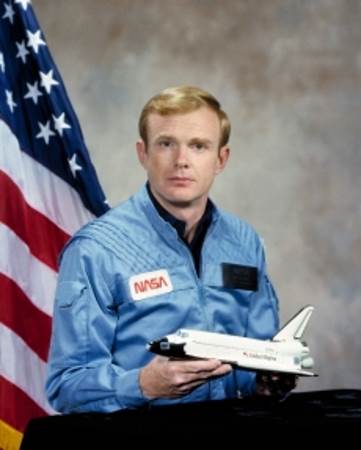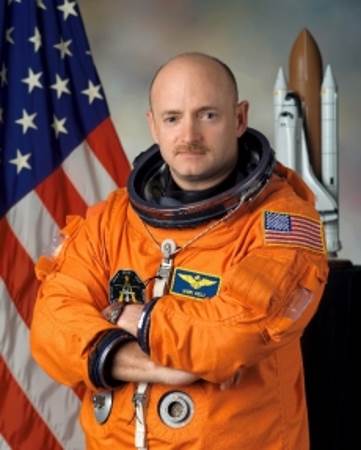Kennedy Space Center’s U.S. Astronaut Hall of Fame To Induct Two Veteran Astronauts in May
Two new veteran astronauts will be honored with plaques in the Astronaut Hall of Fame at the Kennedy Space Center Visitor Complex later this year.
What’s Happening:
- The U.S. Astronaut Hall of Fame, located at Kennedy Space Center Visitor Complex, will add two new plaques to its walls this year. Veteran astronauts Roy Bridges and Senator Mark Kelly, who have demonstrated outstanding accomplishments in furthering NASA’s mission of exploration and discovery, have been selected to receive one of the highest honors in their industry. The announcement was made by Curt Brown, board chairman of the Astronaut Scholarship Foundation, which stewards the selection process.
- Roy Bridges will be coming home to his Kennedy Space Center family, where he served as Center Director from 1997 to 2003. Mark Kelly will be reuniting with his own family during the weekend when he celebrates with his identical twin brother, Scott, who was inducted into the Hall of Fame with the class of 2020. This will be the first pair of siblings and the first set of identical twins to both hold a place in the esteemed group. Mark Kelly will also be the second sitting Senator to be inducted, following John Glenn’s placement in 1990.
- An official ceremony and gala will take place at Kennedy Space Center Visitor Complex on May 6, 2023. Set against the historic and stunning backdrop of the Space Shuttle Atlantis®, the ceremony will be attended by a number of astronaut legends. Following the induction, the newest Hall of Fame members will be celebrated at an evening black-tie event hosted by the Astronaut Scholarship Foundation.
- The U.S. Astronaut Hall of Fame was spearheaded more than 30 years ago by the six surviving Mercury 7 astronauts. In November 2016, a new U.S. Astronaut Hall of Fame opened at Kennedy Space Center Visitor Complex, as part of the Heroes & Legends attraction.
- Each year, inductees are selected by a committee of Hall of Fame astronauts, former NASA officials, flight directors, historians and journalists. The process is administered by the Astronaut Scholarship Foundation. To be eligible, an astronaut must have made his or her first flight at least 15 years before the induction. Candidates must be U.S. citizens and either a NASA-trained Space Shuttle Commander (CDR), Pilot (PLT), Mission Specialist (MS), or an International Space Station (ISS) Commander (CDR) or Flight Engineer (FE) who has orbited the earth at least once and whose last day eligible for flight assignment as a NASA astronaut was at least five years prior to nomination.
- Bridges and Kelly each have had distinguished careers, centered around their love of space and science.
What They’re Saying:
- Curt Brown, board chairman of the Astronaut Scholarship Foundation: “This year’s class is another example of excellence from our space program. The Hall of Fame has inducted 105 individuals with this honor; this year's nominees are perfect examples of the accomplished individuals who are inducted each year. Both Kelly and Bridges represent the committed spirit of exploration, bravery and teamwork that make our space program a continued success. We are proud and honored to have them join the ranks of the space pioneers recognized in the United States Astronaut Hall of Fame at Kennedy Space Center Visitor Complex."
More About Major General Roy D. Bridges, Jr. (STS-51F):
- Roy D. Bridges (Major General USAF, ret.) was selected as an astronaut in 1980. A graduate of the U.S. Air Force Academy and Purdue University where he earned a bachelor’s degree in engineering management and a master’s degree in astronautics, respectively, Bridges has dedicated his career to the air and space industry.
- As a pilot, test pilot and astronaut, he flew 4,460 hours in a variety of aircraft including the F-100, F-104, YA/A-10, A-37, OV-99 (space shuttle Challenger), C-11, F-15, T-37, and T-38.
- In July 1985, he piloted the space shuttle Challenger for the eight-day Spacelab 2 mission. The main mission objective for STS-51F was to verify performance of Spacelab systems, determine interface capability of the orbiter, and measure the spacecraft environment. Experiments performed covered life sciences, plasma physics, astronomy, high-energy astrophysics, solar physics, atmospheric physics and technology research.
- Bridges went on to serve as Center Director of NASA’s Kennedy Space Center from 1997 to 2003, where he was responsible for NASA’s Space Shuttle and International Space Station (ISS) launch processing and operations as well as the acquisition and launch of NASA’s expendable launch vehicle missions. Between 2003 and 2005, he served as the Center Director of NASA’s Langley Research Center, where he directed aeronautical and space research programs before joining Northrop Grumman. Bridges retired from his position as Technology Services’ Director responsible for the Department of Energy business with Northrop Grumman in January 2019.
- A retired U.S. Air Force Major General, Bridges has served at Wright-Patterson AFB OH as the Air Force Materiel Command Director of Requirements; Commander, Air Force Flight Test Center, Edwards Air Force Base CA; Commander, Eastern Space and Missile Center, Patrick AFB FL; and Commander, 412th Test Wing, Edwards AFB CA.
- Among the awards Bridges has received are the National Nuclear Security Administration’s highest honor – the Administrator’s Distinguished Service Gold Award – in 2017, as well as NASA’s Outstanding Leadership Medal, the Presidential Meritorious Executive Award, the Northrop Grumman Award for Excellence, and many military honors.
More About Senator Mark Kelly (STS-108, STS-121, STS-124, STS-134):
- Mark Kelly (Captain, USN, ret.) has served as a U.S. Navy combat pilot, a NASA astronaut, and is now serving as a U.S. Senator for Arizona.
- Kelly earned his bachelor’s degree in marine engineering and nautical science from the U.S. Merchant Marine Academy and later a master’s degree in aeronautical engineering from the U.S. Naval Postgraduate School.
- As a Navy pilot, he made multiple deployments aboard the aircraft carrier USS Midway and flew 39 combat missions in Operation Desert Storm. He has logged more than 5,000 flight hours in more than 50 different aircraft and has over 375 carrier landings. Kelly retired from the Navy with the rank of Captain.
- In 1996, he was selected as an astronaut in the same NASA class as his identical twin brother, Scott. Kelly’s first of four trips into space were as pilot of STS-108 in December 2001, during which he helped deliver equipment, supplies and additional crew members to the ISS. He then served as pilot of STS-121 aboard Discovery, the second “Return to Flight" mission following the loss of Columbia in February 2003. STS-124, also aboard Discovery, in May of 2008 was Kelly’s first mission as commander. Kelly and his crew delivered the pressurized module for the Japanese Lab to the ISS.
- He retired from NASA in 2011 after commanding space shuttle Endeavour on its final flight, STS-134, which delivered the Alpha Magnetic Spectrometer to the ISS. Kelly has spent more than 50 days in space – traveling over 20 million miles.
- As U.S. Senator for Arizona, he serves as chair of the Airland subcommittee on Senate Armed Services, which oversees the Army and Air Force planning, operations and programs. He also sits on the Environment and Public Works and the Energy and Natural Resources Committees.
- Senator Kelly is the recipient of two Defense Superior Service Medals, Legion of Merit, two Distinguished Flying Crosses, and multiple Air Medals. He lives in Tucson with his wife, former Congresswoman, Gabby Giffords. Kelly has two daughters, Claire, a graduate of Arizona State University, and Claudia who lives in Tucson, is a student at the University of Arizona and is the mother of Kelly’s two-year-old granddaughter, Sage.



